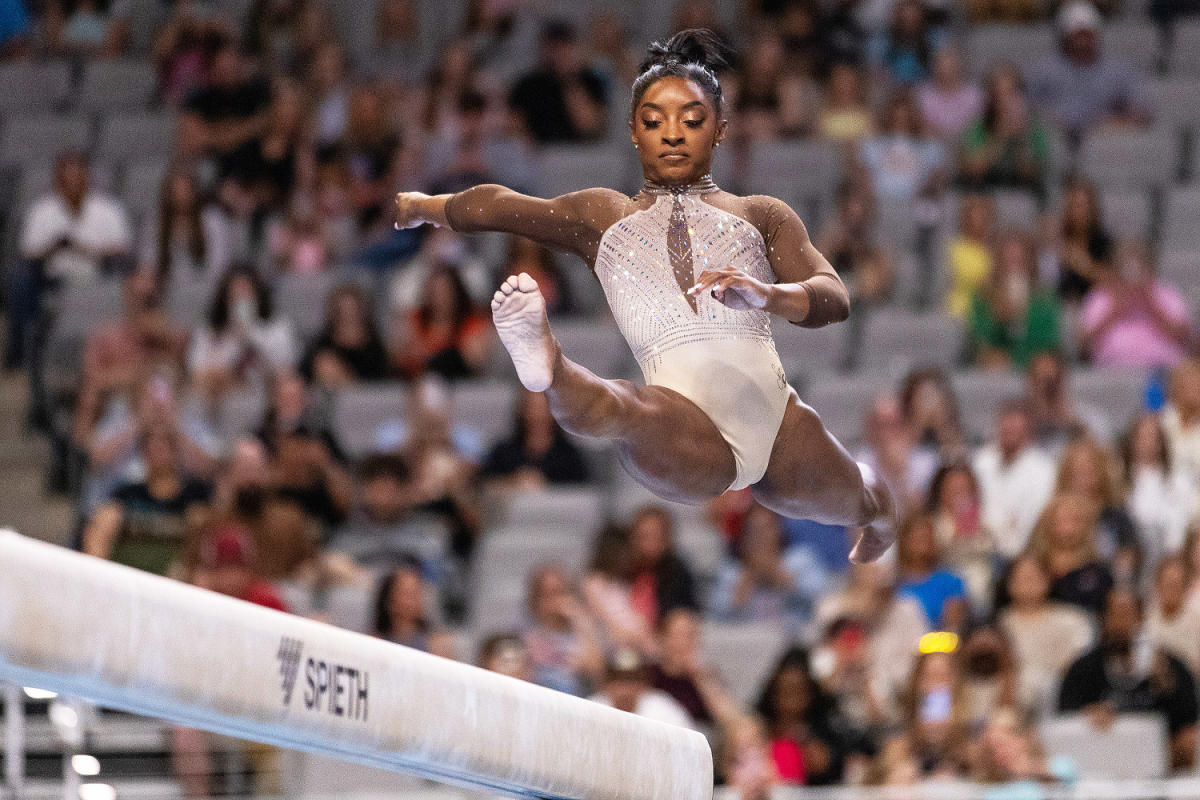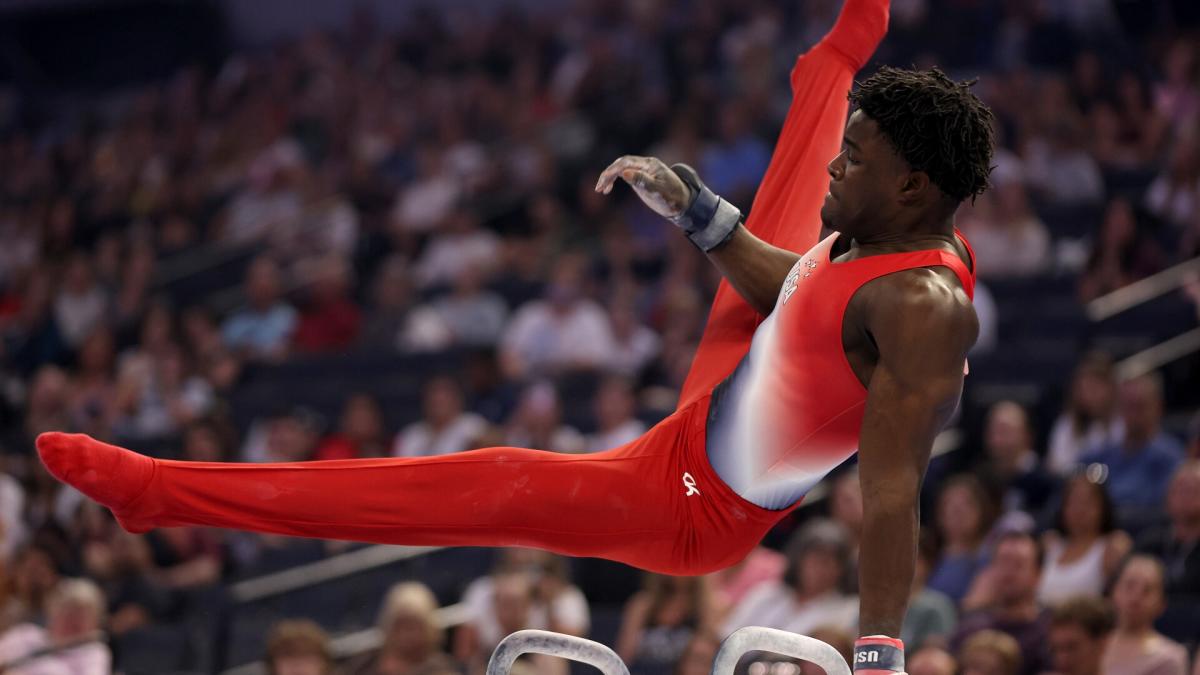History and Evolution of Women’s Gymnastics at the Olympic Trials
Women gymnastics olympic trials – Women’s gymnastics has a rich history at the Olympic trials, with the first women’s Olympic gymnastics competition held in 1928. Since then, the sport has evolved significantly, with new rules and innovations constantly being introduced. The impact of influential gymnasts has also played a major role in the development of the sport.
The women’s gymnastics Olympic trials are underway, and one of the most anticipated athletes is Shilese Jones. Unfortunately, Jones suffered an injury during the competition. Click here to read more about Jones’ injury. Despite the setback, the trials continue, and there are still many talented gymnasts competing for a spot on the Olympic team.
Significant Rule Changes and Innovations
One of the most significant rule changes in women’s gymnastics was the introduction of the 10.0 scoring system in 2006. This system replaced the previous 10-point system, which had been in place since the 1950s. The new system allowed gymnasts to earn higher scores for more difficult skills, and it led to a significant increase in the overall level of difficulty in the sport.
Another major innovation in women’s gymnastics was the introduction of the vault table in 1956. The vault table is a springboard that helps gymnasts to gain height and momentum for their vaults. The introduction of the vault table made it possible for gymnasts to perform more difficult and dangerous vaults, and it has since become a staple of the sport.
The women’s gymnastics Olympic trials are underway, and one of the gymnasts to watch is Shane Wiskus. Wiskus is a rising star in the gymnastics world, and she has already won several medals at the national level. She is known for her powerful tumbling and her elegant routines.
Wiskus is hoping to make the Olympic team this year, and she is certainly one to watch in the upcoming trials.
Impact of Influential Gymnasts
A number of influential gymnasts have played a major role in the development of women’s gymnastics. One of the most famous is Nadia Comaneci, who became the first gymnast to ever score a perfect 10.0 at the Olympic Games in 1976. Comaneci’s performance inspired a generation of gymnasts and helped to popularize the sport around the world.
Another influential gymnast is Simone Biles, who is considered to be one of the greatest gymnasts of all time. Biles has won numerous Olympic and world championship medals, and she is known for her incredible strength and athleticism. Biles’ success has helped to raise the profile of women’s gymnastics and has inspired a new generation of young gymnasts.
Performance Analysis of Elite Gymnasts: Women Gymnastics Olympic Trials
Elite gymnasts display remarkable technical and artistic prowess, pushing the boundaries of human movement. Their performances are characterized by exceptional strength, flexibility, coordination, and grace. Analyzing their techniques and styles provides insights into the intricacies of the sport.
Technical Aspects
Gymnasts are judged on their execution of specific skills, including vaults, uneven bars, balance beam, and floor exercise. Technical aspects include:
– Body Control: Maintaining proper form and alignment throughout movements.
– Power and Strength: Generating explosive force for jumps and other dynamic maneuvers.
– Precision and Accuracy: Executing skills with minimal errors and deviations from ideal form.
– Rhythm and Timing: Performing movements in sync with music or the apparatus.
Artistic Aspects
Beyond technical execution, gymnasts strive to create performances that are both visually appealing and emotionally expressive. Artistic aspects include:
– Choreography: Designing routines that showcase their strengths and convey a theme or story.
– Body Language and Expression: Using body movements to communicate emotions and enhance the audience’s engagement.
– Music Interpretation: Interpreting and responding to music through their movements.
– Stage Presence: Commanding the audience’s attention and creating a memorable performance.
Strengths and Weaknesses
Elite gymnasts often share common strengths, such as exceptional flexibility, core strength, and coordination. However, individual weaknesses may vary. Some may struggle with certain apparatus or skills, while others may have limited range of motion or balance issues.
Styles and Strategies, Women gymnastics olympic trials
Gymnasts develop unique styles and strategies to maximize their strengths and minimize weaknesses. Some may focus on power and athleticism, while others emphasize flexibility and grace. They may also adjust their routines based on the apparatus or the specific competition format.
Comparing and contrasting the performances of different gymnasts highlights the diversity and individuality within the sport. Each athlete brings their own unique strengths, weaknesses, and artistic vision, making every performance a captivating spectacle.
Team Dynamics and Selection Process
:max_bytes(150000):strip_icc():focal(749x176:751x178)/Olympic-Gymnastics-Team-Trials-062724-3-9ec0c1f8b62d4ec9a69db5b7becf318f.jpg)
The women’s gymnastics Olympic trials showcase not only individual talent but also the dynamics and camaraderie among the gymnasts. These athletes train together for years, developing strong bonds that extend beyond the gym.
The selection process for the Olympic team is rigorous and involves multiple factors. Coaches consider each gymnast’s technical skills, consistency, and ability to perform under pressure. They also assess the team’s overall balance and compatibility, ensuring that the gymnasts complement each other’s strengths and weaknesses.
Factors Influencing Coaches’ Decisions
- Technical Skills: Gymnasts must demonstrate mastery of all four apparatus (vault, uneven bars, balance beam, and floor exercise) and execute their routines with precision and difficulty.
- Consistency: Coaches prioritize gymnasts who consistently perform well across multiple competitions, minimizing errors and showcasing their ability to handle the pressure of high-stakes events.
- Ability to Perform Under Pressure: The Olympic trials are a pressure-packed environment, and coaches evaluate how gymnasts respond to the intense competition and scrutiny.
- Team Balance: Coaches aim to create a team with a range of strengths and specialties, ensuring they have gymnasts who excel on different apparatus and can cover for any weaknesses.
- Compatibility: Team chemistry is crucial, and coaches assess how well the gymnasts work together, support each other, and create a positive and cohesive environment.

